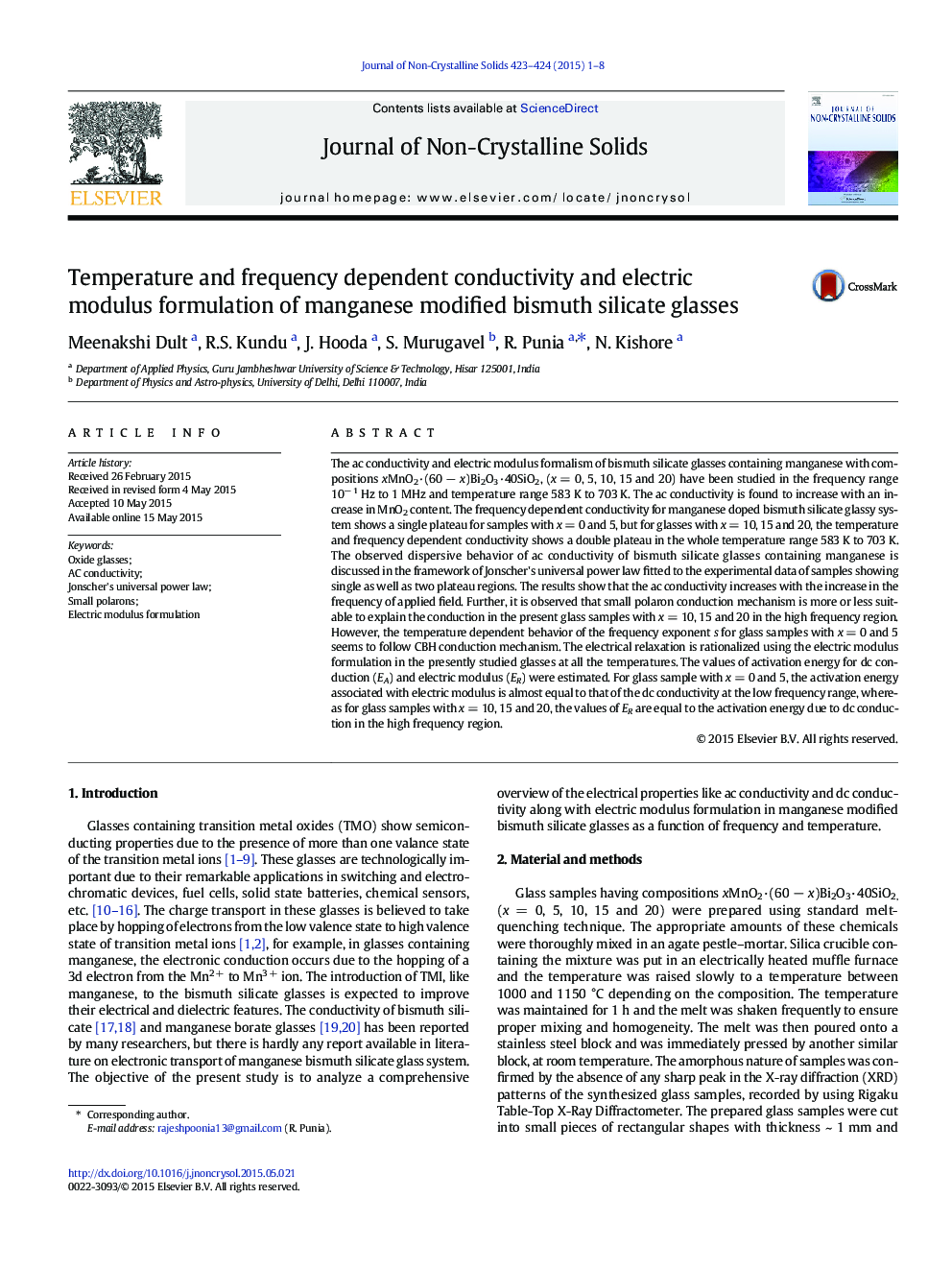| کد مقاله | کد نشریه | سال انتشار | مقاله انگلیسی | نسخه تمام متن |
|---|---|---|---|---|
| 1480687 | 1510420 | 2015 | 8 صفحه PDF | دانلود رایگان |
• The ac conductivity is found to increase with increase in MnO2 content.
• Small polaron tunneling is observed in the glass samples with x = 10, 15 and 20.
• The conduction in glass sample with x = 0 and 5 obeys the CBH mechanism.
• Non-Debye type relaxation is observed in the studied glass system.
The ac conductivity and electric modulus formalism of bismuth silicate glasses containing manganese with compositions xMnO2·(60 − x)Bi2O3·40SiO2, (x = 0, 5, 10, 15 and 20) have been studied in the frequency range 10− 1 Hz to 1 MHz and temperature range 583 K to 703 K. The ac conductivity is found to increase with an increase in MnO2 content. The frequency dependent conductivity for manganese doped bismuth silicate glassy system shows a single plateau for samples with x = 0 and 5, but for glasses with x = 10, 15 and 20, the temperature and frequency dependent conductivity shows a double plateau in the whole temperature range 583 K to 703 K. The observed dispersive behavior of ac conductivity of bismuth silicate glasses containing manganese is discussed in the framework of Jonscher's universal power law fitted to the experimental data of samples showing single as well as two plateau regions. The results show that the ac conductivity increases with the increase in the frequency of applied field. Further, it is observed that small polaron conduction mechanism is more or less suitable to explain the conduction in the present glass samples with x = 10, 15 and 20 in the high frequency region. However, the temperature dependent behavior of the frequency exponent s for glass samples with x = 0 and 5 seems to follow CBH conduction mechanism. The electrical relaxation is rationalized using the electric modulus formulation in the presently studied glasses at all the temperatures. The values of activation energy for dc conduction (EA) and electric modulus (ER) were estimated. For glass sample with x = 0 and 5, the activation energy associated with electric modulus is almost equal to that of the dc conductivity at the low frequency range, whereas for glass samples with x = 10, 15 and 20, the values of ER are equal to the activation energy due to dc conduction in the high frequency region.
Journal: Journal of Non-Crystalline Solids - Volumes 423–424, 1 September 2015, Pages 1–8
